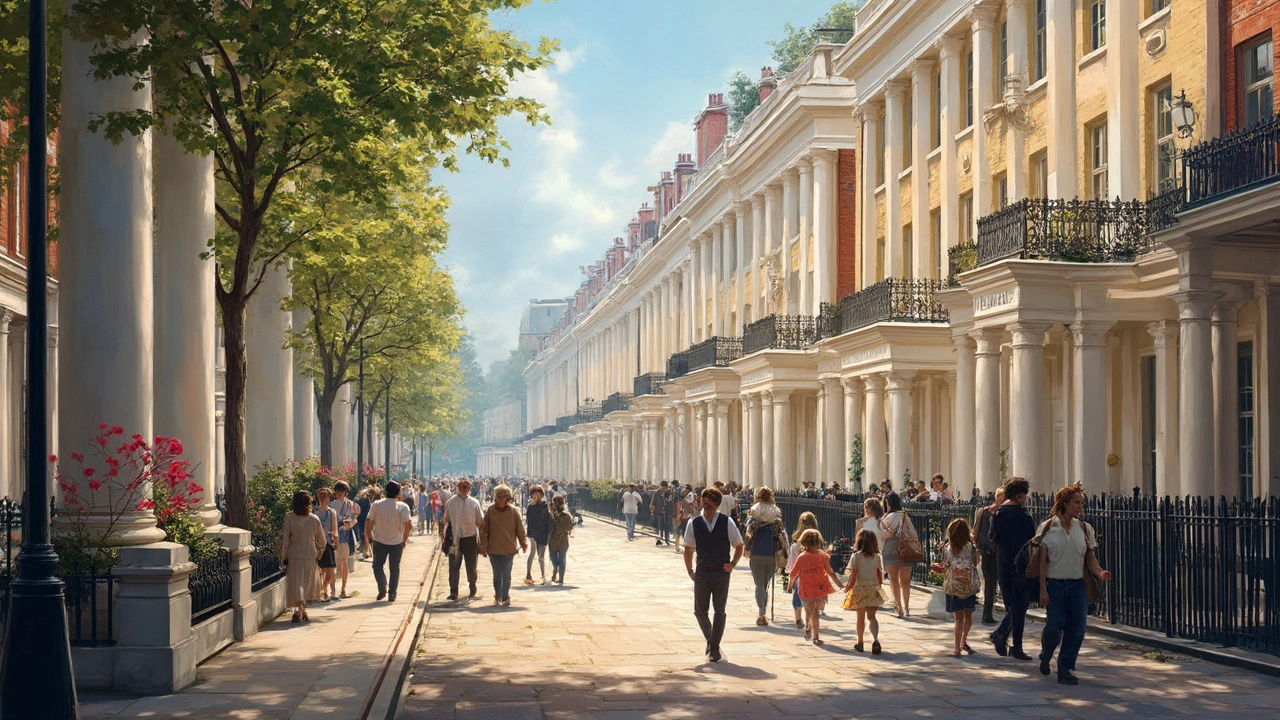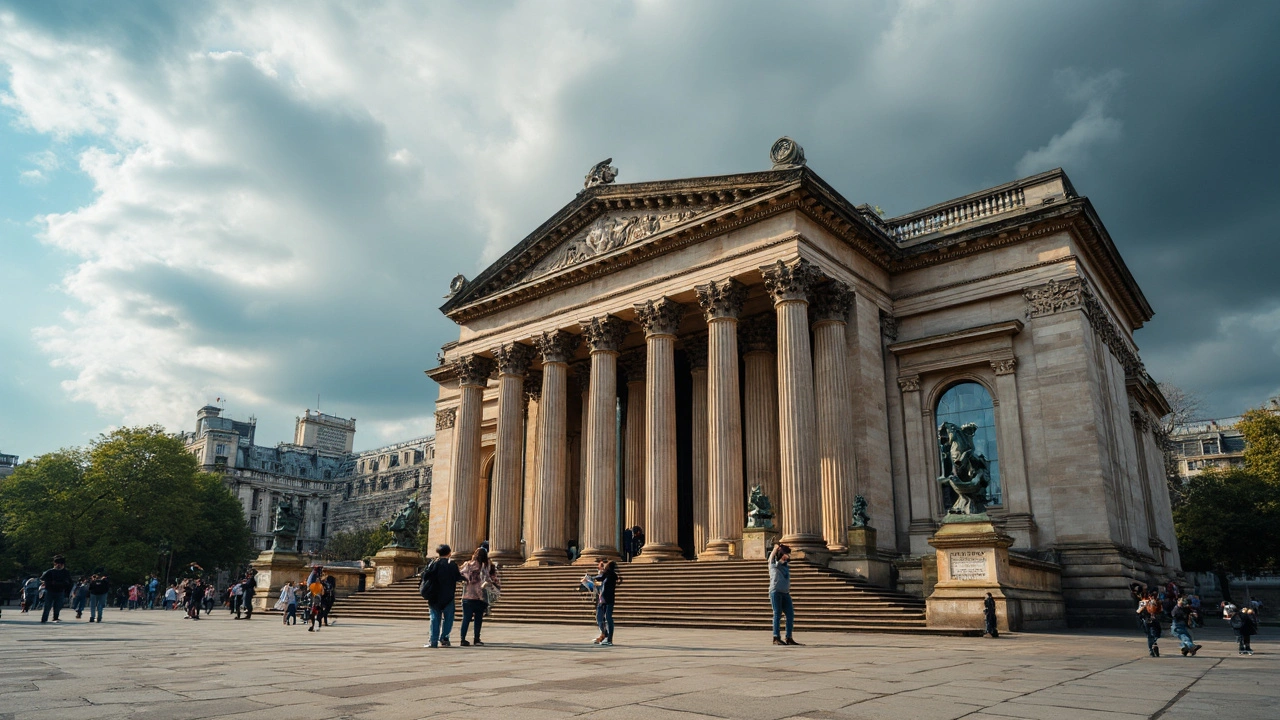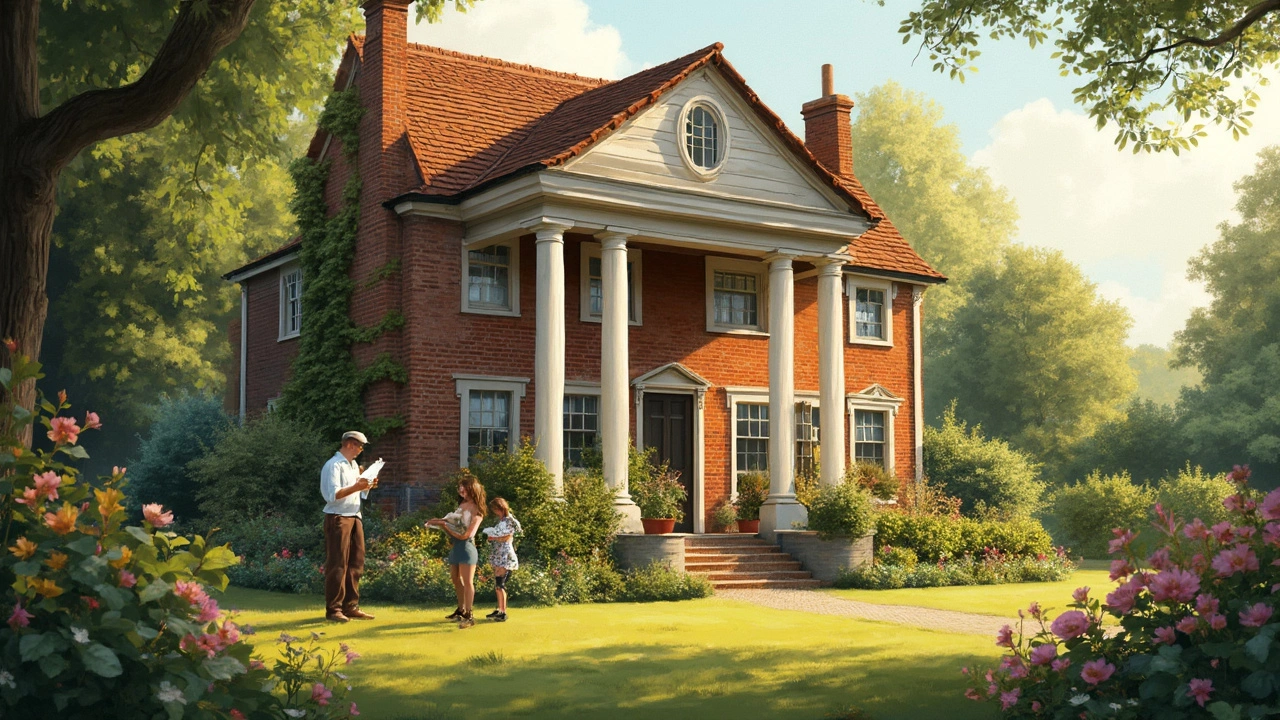Greek Revival Architecture: Timeless Style and Lasting Influence
 May, 19 2025
May, 19 2025
If you’ve ever wandered through a neighborhood and paused in front of a house with big white columns, bold lines, and a porch straight out of a movie, there’s a good chance it’s Greek Revival. This style pops up everywhere, from famous banks to simple small-town homes. But why did everyone get so obsessed with this look?
Greek Revival isn’t just about old buildings. The style caught fire in the 1800s, especially in the U.S., because it felt fresh, grand, and somehow familiar. People saw it as a nod to democracy and strength—think ancient Greece, but with comfy living rooms and picket fences. Today, this look is still everywhere. In fact, if you’ve ever dreamed about updating your house with some old-school charm, Greek Revival offers ideas that work in just about any era.
You don’t need to be an architect to spot Greek Revival features or to borrow a few for your own place. Once you know what to look for, you'll start seeing them everywhere—from your local library to that cute bungalow down the street. And if you’re thinking about giving your home a bit of this classic flair, there are simple ways to do it that won't break the bank. Keep reading for tricks, photos to inspire, and stories behind the style that made ancient Greece feel right at home in the modern world.
- How Greek Revival Became a Sensation
- Key Features You Can't Miss
- Why It Stuck Around
- Spotting Greek Revival in Everyday Life
- Tips for Embracing the Look at Home
How Greek Revival Became a Sensation
Back in the early 1800s, Americans were hungry for a style that felt different from the old European look. Enter Greek Revival—all those crisp columns, massive pediments, and wide porches started popping up everywhere. The timing wasn’t random. After gaining independence, the U.S. wanted something that said “we’re our own country now,” and ancient Greece’s vibe fit perfectly since it was all about democracy and fresh ideas.
Between 1820 and 1860, Greek Revival spread like wildfire. Public buildings, banks, courthouses, and private homes got a makeover. Even the White House chimed in—Presidents like Thomas Jefferson and Andrew Jackson really pushed for this classic look. The style wasn’t just for the elite, though. It filtered down to more affordable homes because builders realized wood and stucco worked just as well as marble.
"The Greek Revival style translated the ideals of ancient democracy and order into a language Americans could understand and afford." — Dr. Leland Roth, author of "American Architecture: A History"
One big reason it took off? Pattern books. These were like the DIY YouTube of the 19th century. Builders used them to copy the look without fancy training. Here’s a snapshot of how fast Greek Revival spread in the U.S.:
| Year | Estimated Greek Revival Buildings Built |
|---|---|
| 1825 | ~200 |
| 1835 | ~1,500 |
| 1850 | Over 10,000 |
You could spot Greek Revival from Maine to Mississippi. And it wasn’t just about the look—the message was just as important. People saw it as a nod to fairness and progress, something that was a big deal in a new country finding its feet. Plus, Greek themes were popping up in fashion, theater, and even politics, so this wasn’t just about architecture—it shaped the mood of an era.
- Pattern books like Asher Benjamin’s made the designs doable for any skilled carpenter.
- Greek Revival worked for all kinds of budgets, using wood painted to look like stone.
- The style even made its way to schools and churches—not just homes and big government buildings.
So, the next time you pass a building with giant white columns and clean lines, you’ll know—this wasn’t just about looking pretty. It was a statement, and the whole country was in on it.
Key Features You Can't Miss
Spotting Greek Revival architecture gets a lot easier when you know what to look for. There's a formula to it—almost like a checklist. And the cool thing? These details show up on all sorts of buildings: giant courthouses, churches, and even regular family homes built in the early 1800s through the Civil War era. Here's how you can tell you're looking at real Greek Revival:
- Columns Front and Center: Think big, often white, sometimes round (Doric, Ionic, or Corinthian styles). The columns are usually the first thing people notice, and for good reason—they’re borrowed straight from ancient Greek temples.
- Porches That Make a Statement: You’ll often see a grand entry porch, called a portico, with columns running all the way up to the roof. Sometimes, the porch stretches the full length of the house.
- Heavy Trim and Moldings: Wide, simple trim around doors and windows is a classic move. Above the entry, you might even spot a rectangular window known as a transom letting in extra light.
- Pediments Everywhere: That bold triangle you see above the porch or roof? That’s a pediment. It’s all about copying the look of ancient Greek buildings like the Parthenon.
- Symmetry Rules: These buildings love balance. Windows and doors are lined up just right so the whole thing feels strong and orderly.
If you’re into numbers, check out how widespread the style became in America alone:
| Type of Building | Common Years Built | Estimated Number Still Standing (US) |
|---|---|---|
| Homes | 1825-1860 | Over 20,000 |
| Public Buildings | 1830-1860 | About 2,000 |
| Churches | 1830-1870 | Roughly 1,000 |
One quick test: If you see a house that looks more like a mini-temple, with columns and a triangle roof piece, that's almost always a Greek Revival. Even the paint mattered; most were painted white to mimic marble, though brick versions pop up too. Don't forget those wide cornices at the roofline—another nod to ancient style, but designed to keep harsh sunlight and rain away from the windows.

Why It Stuck Around
Greek Revival architecture didn’t just show up and disappear like a passing trend. It stayed because it came packed with meanings and practical perks that worked for both city planners and folks building their dream homes.
Let’s get real—part of the staying power comes from what Greek Revival stood for in the first place. In the early 1800s, people in the U.S. and Europe wanted to show off democratic values. The ancient Greeks basically wrote the rulebook on democracy, so copying their buildings just made sense. But it wasn’t all about ideals; it was also about looks and function.
- Greek Revival homes are easy to spot with those massive columns out front—these weren’t just decorative, they also let builders create wide, welcoming porches.
- The simple shapes and flat lines meant houses could be built fast and at less cost. No need for fancy carvings—just solid, clean forms.
- The style’s symmetry makes any building feel balanced and calm, which people still love today.
It didn’t hurt that Greek Revival buildings were super versatile. You could go all-out with marble columns and huge porticos for public buildings—or go simple with wood and paint for a family home. This flexibility meant it worked in big cities, small towns, and even on early American farmhouses.
The numbers back up just how long-lasting the style has been. Here’s a quick peek at some details:
| Fact | Detail |
|---|---|
| Peak U.S. Popularity | 1820–1860 |
| Number of Surviving Buildings (U.S.) | Over 10,000 registered on the National Register of Historic Places |
| Common Materials | Wood (often painted white), brick, stone |
Even today, cities like Washington, D.C. are filled with Greek Revival influences—just look at the U.S. Capitol or almost any courthouse built in the 19th century. And on a smaller scale, home reno shows keep bringing the style back because it’s simple to adapt. Whether people are after a grand entrance or just love crisp, bold lines, Greek Revival keeps finding its way into new builds and updates. That's some serious staying power.
Spotting Greek Revival in Everyday Life
Thinking Greek-inspired buildings are only for big city museums or famous southern mansions? Not even close. The Greek Revival style shows up more often than you’d think—sometimes right under your nose on Main Street or in your neighbor’s porch columns.
These are some everyday spots you’re likely to find Greek Revival:
- Public buildings: City halls, courthouses, and even fire stations, especially those built between 1825-1860, often went all in on Greek designs to project strength and democracy. Next time you head to pay a ticket or vote, check for chunky white columns and those triangle pediments.
- Houses: From farmhouses to row homes, Greek Revival details like sidelights around the front door or broad entry porches are everywhere. Even newer homes sometimes copy these touches for curb appeal.
- Churches: Many American churches, especially in New England and the South, used Greek Revival to feel welcoming and timeless. Spot those big steps and entryways—it’s easy to see the ancient Greek temple vibes.
- Banks and Libraries: Want to give a serious, trustworthy look? That’s why so many bank buildings, old or new, borrow Greek Revival cues inside and out.
Here are some big clues you’re staring at a Greek Revival gem:
- Tall columns, usually in the front
- Wide, triangular gables or pediments
- Big, bold moldings (never fussy or over-the-top)
- Rectangle transom windows above the door
- Symmetry—everything lines up
If you're the numbers type, check out this look at where Greek Revival architecture pops up most in the U.S.:
| State | Estimated Greek Revival Buildings | Famous Example |
|---|---|---|
| New York | 2,500+ | Merchant’s House Museum |
| Georgia | 1,600+ | Owens-Thomas House |
| Ohio | 1,200+ | Statehouse |
| Mississippi | 900+ | Waverley Mansion |
| Massachusetts | 800+ | Asa Gray House |
Spotting these buildings gets easier once you know the signs. Next time you're out—whether you're running errands, walking to a coffee shop, or road-tripping through a small town—look up. You might just find a little bit of ancient Greece hiding in the architecture around you.

Tips for Embracing the Look at Home
Ready to bring a little Greek Revival magic to your place? You don’t have to live in a giant mansion with marble steps or carve limestone lions for your porch. The style works great in everyday spaces and even small changes can make a big difference.
- Columns count—even small ones. While massive white columns are the hallmark of Greek Revival, you can cheat a little. Try slim, square porch columns, or even fake half-columns (called pilasters) by your front door. Hardware stores offer porch post kits that snap right into place.
- Paint tricks. This style loves crisp white or soft, pale colors—think stone, gray, or light blue. If your siding's bold, even just painting the trim can give Greek Revival vibes.
- Pediments and gables. Those triangle shapes above entrances? Add a decorative pediment with a wooden trim kit, or just paint one in place above your door for the effect.
- Symmetry is key. Arrange windows, planters, or porch lights evenly so things look balanced on each side of your doorway.
- Door details. Heavy doors with panels, often painted bold black or deep green, instantly channel this look. Hardware with simple, clean lines works better than anything super ornate.
If you're thinking numbers, Greek Revival peaked in the U.S. between 1825 and 1860, with over 10,000 homes getting the full columned treatment, according to the National Park Service. But you don’t need original bones for the style to pop up. Even a small ranch or bungalow can wear these details well.
| Feature | Estimated Cost Range | Difficulty |
|---|---|---|
| Adding Faux Columns | $250–$800 per pair | DIY/Easy |
| Repainting Trim | $30–$150 (materials) | DIY/Easy |
| Pediment Accent | $75–$300 | DIY/Moderate |
| Symmetrical Landscaping | $50–$500 | DIY/Easy |
| New Front Door | $350–$1200 | Pro recommended |
Just remember, the little things add up. Even if you start with one feature—like a bold new door and sconces—you’re already closer to that timeless Greek Revival feel.